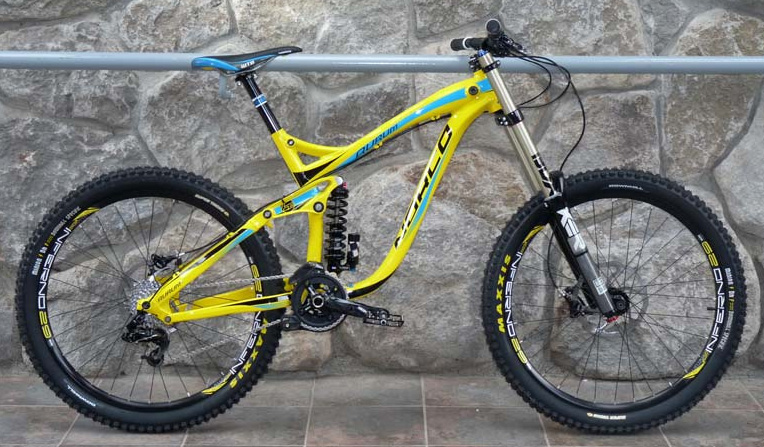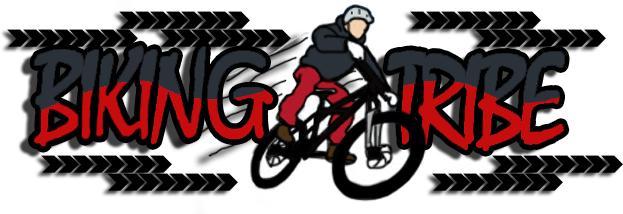- You are here:
- Home »
- Mountain Bikes
- » Hardtail vs. Full Suspension Bike

Hardtail vs. Full Suspension Bike
Which Bike Should You Choose?
Mountain bikers looking to invest in a new set of wheels have to make a decision between a hardtail mountain bike and a full suspension frame bike for cross country and rough terrain. The question of which bike you should choose depends on your intended usage, your environment, and, of course, your budget. A hardtail bike versus a full suspension bike presents more straightforward engineering design elements in its construction. However, full suspension bikes offer an added level of shock absorption but there is more intricate engineering, which can become damaged or fail more easily. For those setting out on the quest of finding the right mountain bike, here is a hardtail vs. suspension bike guide to help you decide which bike you should choose.
Basic Differences of Hardtail vs. Full Suspension
The question of which bike you should choose comes down to your preferences regarding your bicycle riding tendencies. If you are a mountain biker who prioritizes weekend trail rides and purely recreational usage, your needs may be different than a those of a rider who is more akin to long rides on varied terrain.
Hardtails
Hardtail mountain bikes sport a solid, one-piece frame, which includes a suspension fork that is mounted on the front of the bike. The back of the bike does not feature a suspension fork. This is where the name “hardtail” comes from. Hardtail bikes feature only one suspension fork, giving the rear end or tail of the bike a hard feeling.
Full Suspension
Mountain bikes, classified as full suspension bikes, also feature the front suspension fork, as on a hardtail mountain bike. However, in addition to the front suspension fork, they also feature a rear suspension fork. The design engineering that goes into making a full suspension bike incorporates two separate frame pieces, shaped as triangles, which are joined together by pivots. Shock absorbers act to control the two pieces rate of motion while the pivot joining works to allow the bike’s frame to be more versatile on varied terrain.
Hardtail vs. Full Suspension Bike Features and Specs
The best bike for you depends on many things, including your individual predilections toward biking. What kind of ride are you looking for? Each frame type has its own pros and cons for riders and individual areas in which the bike type excels and falls short. So, let's get into the nitty gritty to assist in the decision of which bike you should choose.
Mountain Bike Frame

The complication and intricacy of your bike’s frame design will dictate the price bracket for in which it resides, as well as the reliability of the bikes construction. For the best full suspension bikes, you will expect to pay quite a bit more than for an equivalent hardtail model. That being said, a full suspension bike is most certainly more comfortable to ride on rough trails but you are going to feel it in your pocketbook.
A full suspension mountain bike frame needs to be able to shift the shock absorption of the frame through the pivot point to disperse the shock load. On top of the added complexity and cost in a full suspension bikes design and manufacturing, this bike type also comes with a sacrifice in durability. The more connection points there are, the weaker the bond. Shock and physical stress on the frame can weaken the bonds over time and riders will find it necessary to have the bikes pivot repaired or replaced, from time to time. Of course, the frequency of this work will depend on the amount of usage you give to the bike and the stress that it encounters on rides. Those living in the Rocky Mountains will have to be incredibly attentive to the state of wear on their frame, compared to those who ride a hardtail.
Hardtail mountain bikes make for a bumpier ride and require a rider to act more as their own rear shock absorber. This might entail lifting one's butt off of the bike seat often when going over rough terrain and bumps. That hardtail frame will often be much lighter than that of its full suspension counterpart, due to the mitigated need for extra hardware in the form of a shock absorber and pivot connector.
Which Bike Should You Choose?
Hardtails are more difficult to ride on rough trails, especially for beginners to the world of trail riding and off-road biking. That being said, what hardtails lack in suspension, they more than make up for in the quality of their additional components, such as the drivetrain, suspension fork, wheels, and tires. However, if you don't mind the added weight and maintenance required, a full suspension bike will offer riders a more immediately enjoyable and softer ride, but with the added convenience comes a markup in the price tag.
For Beginning Mountain Bikers
It comes down to this: If you have a large budget and are a beginner, you will most definitely want a high-quality full-suspension bike. If you are working with a small budget and you are a beginner, you might want to consider a hardtail. Beginners to the mountain biking scene will find great value in the ability to ride for a longer time span, without feeling the bodily stressors of low shock absorption. However, many beginners will likely benefit more from learning to ride a hardtail efficiently and can find a better hardtail bike for less money than an equivalent full suspension bike.
For Expert Mountain Bikers
If you are an expert rider with a big budget, the best full suspension bikes on the market offer riders the greatest versatility and range. However, those taking their full suspension bike on prolonged, rough journeys will likely find it necessary to become versed in the upkeep and maintenance of their full suspension bike while on the trail. If you are an expert with a small budget, however, the best hardtail mountain bikes on the market will offer a greater life longevity and low maintenance. Your hardtail will last you more years than you can ride it.





